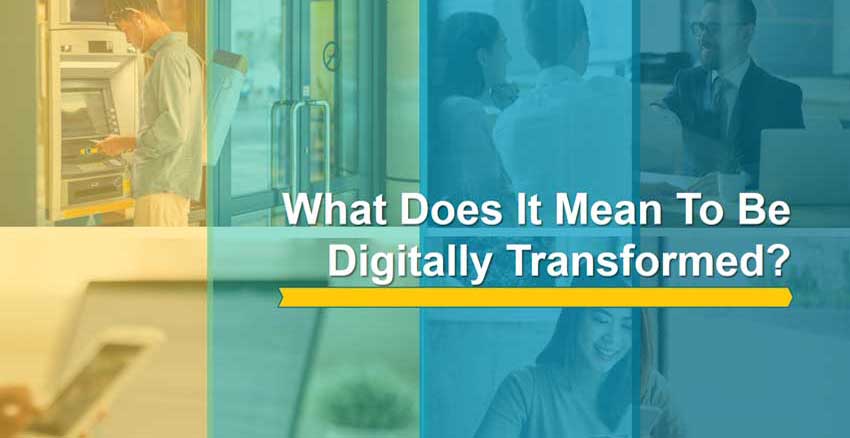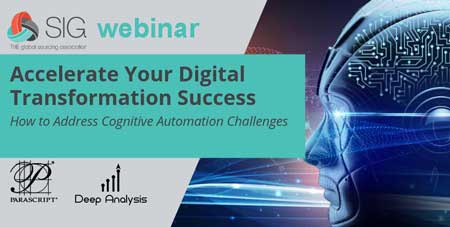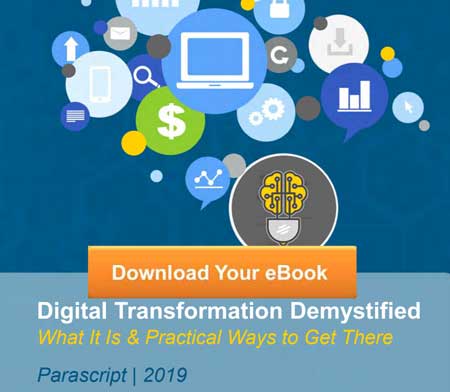In Part 1 of our Digital Transformation (DX) series, we discuss what it means to be digitally transformed.
What does it mean to be digitally transformed? There is a lot on digital transformation. Unfortunately, much of it covers the topic without providing any real meaning behind the words. As consultant and author Alan Pelz-Sharpe of firm Deep Analysis, digital transformation is not “a thing.” Rather it is an approach driven by the need to become more customer-centric, more adaptable to market changes and more proactive to exploit market opportunities.
Inherent within all three of these needs is speed. The ability to serve customers, adapt and exploit opportunities more quickly provides a major competitive advantage. Some consultants immediately go to the technology stack inserting words like automation, analytics and artificial intelligence into the definition. However, technology of any kind is merely supportive of the three primary objectives for digital transformation.
What does digital transformation look like? First, it isn’t “webifying” a product or service. Adding Internet connectivity to a product or creating a web page front end to a service does not in and of itself mean anything. Adding process automation on the back-end of some business function does not mean it is digitally transformed, especially if it doesn’t improve the partner or customer experience, which is so important to business.
Enterprise Culture and Technology
In a webinar I hosted with my colleague Bill Johnson, I noted that addressing culture is more important than any adoption of new technology. So too is the ability to address the entire ecosystem involved with a business. Being digitally transformed is not an insular definition. While your organization may become more tightly integrated into your partner’s and customer’s worlds, it is not tightly integrated with technology that will be obsolete in a few years. Processes should be redesigned to achieve maximum efficiency and adaptability, not just papered over with automation technology. Also, digital transformation does not mean the end of documents. Document-based information, while increasingly born-digital versus paper or scanned documents, is still very much an important modality of data.
Transformation in Banking
Take, for example, a process in which we’ve all participated in at some point: depositing a check. The non-digitally transformed process involved taking a check to a bank branch, waiting in line and interacting with a bank teller who would take the check, view it to ensure all necessary data is there, verify that the payee is the one depositing the check and has endorsed it, and then enters the data into a core banking system. You might argue that the digitally-transformed version of this process would be the mobile deposit services that have been the rage for the past several years.
However, if you look closely at the entire process, at least up until more recently, you would see a process where a customer can take a picture and upload it to their bank, but then the bank’s processes were still very much the same. Someone, somewhere would need to verify the check itself and then post it to the customer’s account. This process took days during which the funds were not available. While the ability to deposit a check without driving to a branch was definitely a step forward, the immediacy of the funds was not there. More recently, solution providers have moved to a process where, through technology, the task of validating the check can be done automatically, enabling the majority of check-based funds to be posted within an hour, becoming immediately available.
Transformation in Customer Onboarding
Another example is customer onboarding. Even today’s more advanced processes that allow prospective customers to easily take pictures of required documentation using smart phones still must wait days for businesses to verify submission and completeness and often must complete the process in-person. The front-end might have become more accessible and efficient, but the back-end is still the same. A digitally-transformed process would be redesigned entirely allowing for immediacy in response to the customer when they submit the documents and a quicker overall experience through automated checks that approach real-time processing.
Business Processes Not Technology
Note that in both of these scenarios, I have focused on describing the process and not the technology. By doing so, I focus on the objective of process redesign and not the means. This enables a clear path to requirements gathering, technology selection, and ultimately a successful implementation.
For a more in-depth look at digital transformation, check out the latest Sourcing Industry Group webinar, Accelerate Your Digital Transformation Success: How to Address Cognitive Automation Challenges with Greg Council and Alan Pelz-Sharpe, which includes ten real-world tips for success in digital transformation.
You also might find this eBook of interest, Digital Transformation Demystified eBook
What It Is & Practical Ways to Get There.






